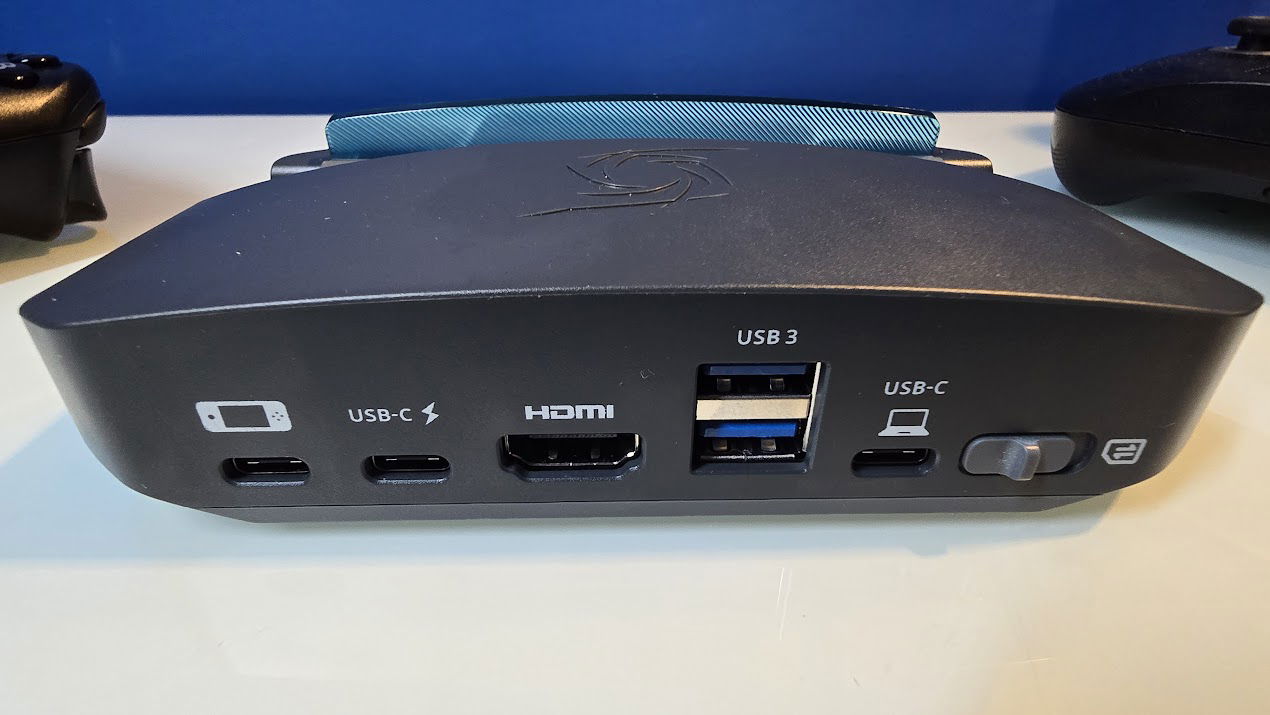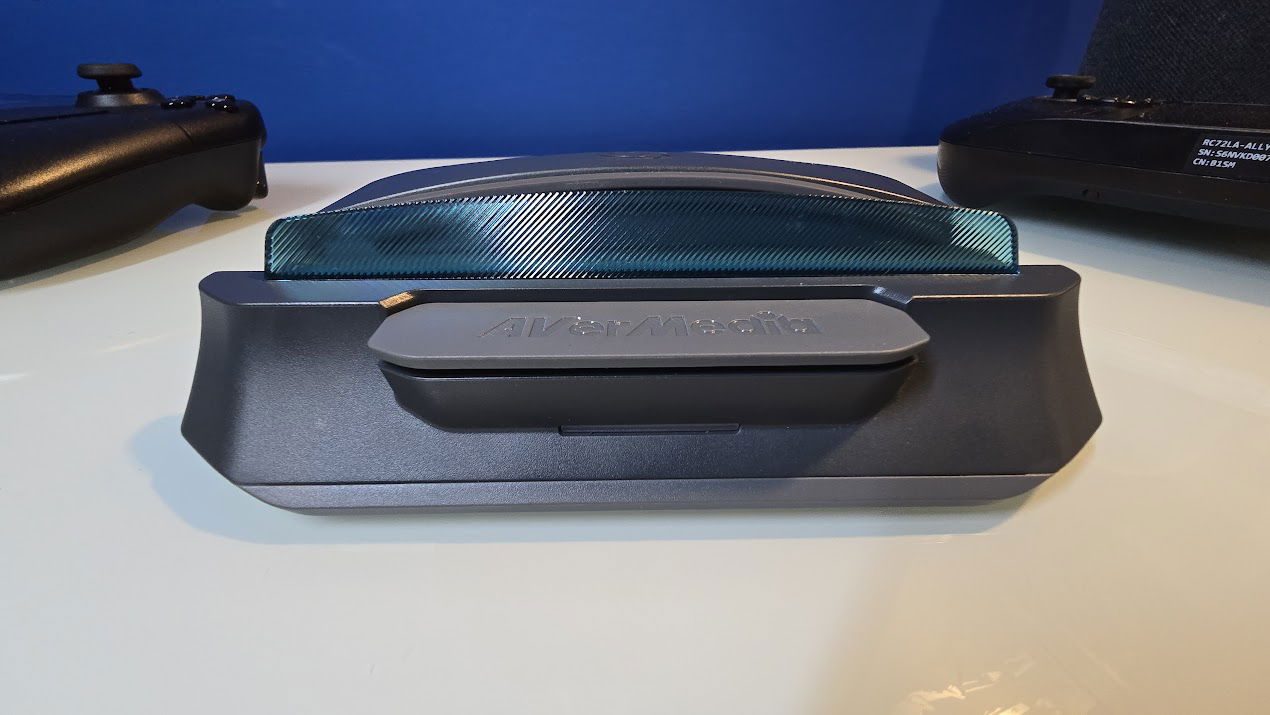AVerMedia is a veteran in the gaming capture device market, known for producing high-quality products for decades. However, until now, it hasn’t specifically catered to the handheld gaming market. Enter the AVerMedia X’tra GO (GC515), a revolutionary dock and capture device designed to simplify recording and streaming from popular handhelds like the Nintendo Switch, Steam Deck, and ROG Ally. But how does it compare to other gaming docks and capture devices? Let’s dive in.
Name: X’tra GO (GC515)
Manufacturer: AVerMedia X’tra
Price: $199.99
As someone who regularly games on the Steam Deck, Asus ROG Ally, and occasionally the Nintendo Switch, I’ve tried various setups to capture and stream gameplay. My previous solution involved using the JSAUX docking station alongside a more complex setup connected to my PC’s internal capture card. While it worked, it wasn’t the most reliable solution. Thankfully, the X’tra GO has made the entire process much simpler, streamlining both gaming and content creation.
Design and Features
The AVerMedia X’tra GO is a compact device that functions as both a dock and a capture device. On the front, there’s an LED indicator and a large, branded button that starts recording or streaming when connected to a PC. The dock at the top securely holds handheld gaming devices, tablets, or smartphones. On the back, you’ll find an HDMI 2.1 port, two USB 3.2 Gen 1 ports, three USB-C ports, and a mode switch to toggle between capture and reader modes. A 3.5mm headphone jack and a MicroSD card slot round out the features.
The device can support up to a 65W power supply, which isn’t included with the device. Using a higher-wattage power supply won’t offer any benefits, such as faster charging, which is a bummer.
To configure the device or stream from it, you will need to connect it to a PC and use the AVerMedia Streaming Center. When configuring the device, you have the option to change the quality of the encodes between normal, good, or optimal, select between H.264 and H.265, and customize how the large button functions.
Unfortunately, the software’s instability is a major drawback. Constant crashes make it frustratingly unreliable, and since configuration depends on this software, it significantly hampers the overall experience. I could be in the middle of changing a setting, and it crashes. I tried to upgrade the firmware, and it crashed. It’s highly frustrating, given that you rely on this software to make any changes to the device, and it crashes so frequently. AVerMedia needs to address this issue as soon as possible.
PC Requirements
While you don’t completely need a PC to use the X’tra GO, you can still use it with a PC if you choose to, or if you want to stream from it. That said, you’ll need to ensure that you meet the requirements to use the device and the software. Here are the necessary specifications:
Operating System
- Windows 10 or Windows 11 (64-bit)
Desktop Requirements
- Intel Core i5-6XXX / AMD Ryzen 3 XXX or higher
- NVIDIA GTX 1060 / AMD RX 5700 or higher
- 8 GB RAM or more recommended
Laptop Requirements
- Intel Core i7-7700HQ + NVIDIA GeForce GTX 1050Ti or higher
- 8 GB RAM or more recommended
macOS Requirements
- macOS 13 / 14 or later
- Apple M1 or 3.6 GHz quad-core Intel Core i7
- Apple M1 or Radeon Pro 555 with 2 GB of VRAM
- 16 GB of 2400 MHz DDR4 memory or higher
Connecting Everything Up
Setting up the X’tra GO is incredibly straightforward. Simply dock your Steam Deck or smartphone, connect the included USB-C cable, and link it to your TV or monitor via HDMI. Pair your preferred controller via Bluetooth or USB, and you’re ready to game. You can even use the handheld device as a controller, though be careful not to yank out the USB-C cable during gameplay.
If you prefer to connect the X’tra GO to your desktop or laptop, simply use the secondary USB-C port. You can then record using software like OBS, or switch to card reader mode to transfer your recordings directly to your PC without removing the MicroSD card. Everything is designed to be as user-friendly and straightforward as possible—no complicated setup required.
Seamless Recording and Streaming
One of the standout features of the X’tra GO is that it allows you to record or stream without needing a PC or laptop. Simply insert a MicroSD card, toggle the switch to capture mode, and press the front button. The LED, which is normally blue, will change to a pulsating red light when in action, indicating that it’s recording or streaming. When you’re done, just tap the button again to stop, and the LED will return to blue.
This feature has been a game-changer for me. I can record Steam Deck gameplay directly to the device without needing to drag my laptop around. It offers a level of convenience similar to the Live Gamer Portable 2 PLUS – GC513.
Capture Performance
The X’tra GO supports a variety of resolutions, ranging from 480p up to 4K, with the ability to record at 1080p 120FPS or 4K 30FPS, and 4K passthrough. While the 4K recording capability may seem unnecessary—since no handheld gaming device currently supports 4K gaming—it’s there for those who may want to connect a PC or laptop to the dock. However, don’t expect this device to bypass HDCP protections on tablets and smartphones; I tested it, and it won’t work for that purpose.
During my review period, I used the AVerMedia X’tra GO in my living room to record to a MicroSD, and I had no issues. Similarly, when I connected it to my laptop, there were no problems on that front either.
Compatibility Concerns
I suppose my biggest gripe, aside from the blasted Streaming Center constantly crashing, is that the AVerMedia X’tra GO’s dock doesn’t fit all handheld gaming devices, which is somewhat expected. AVerMedia boasts that the X’tra GO supports the Steam Deck, MSI Claw, Nintendo Switch, Smartphones, iPads, and the Asus ROG Ally… but not the Asus ROG Ally X? What gives? Asus released the ROG Ally X not too long ago, but the gaming device has been well-known for months. So it’s a shame that the ROG Ally X doesn’t fit in the X’tra GO dock due to its being a bit thicker than the original ROG Ally.
This is concerning, especially since Asus has made a compelling case for people to upgrade to the ROG Ally X, with its updated joysticks, longer battery life, and more. It’s frustrating that while the AVerMedia X’tra GO is nice, my ROG Ally X can’t join the party.
Imagine owning an Asus ROG Ally, picking up the AVerMedia X’tra GO, and then selling it to get the upgraded Asus ROG Ally X… only to find out it doesn’t fit with the dock, leaving you out $200. I’d be pretty frustrated about that. I’d love for AVerMedia to recognize this issue and release an updated model that works with my favorite handheld gaming device. Or perhaps offer some sort of trade-in.

The AVerMedia X’tra GO is available now on Amazon for $199.99.
Review Disclosure Statement: The AVerMedia X’tra GO was purchased for review purposes. For more information on how we review video games and other media/technology, please review our Review Guideline/Scoring Policy.
Affiliate Link Disclosure: One or more of the links above contain affiliate links, which means at no additional cost to you, we may receive a commission should you click through and purchase the item.
Summary
AVerMedia X’tra GO is a solid choice for handheld gaming enthusiasts and content creators, thanks to being an all-in-one device that affords portability. The price tag is a bit steep in my opinion and AVerMedia needs to address the constant software crashing, yet outside of that the device is solid and does what it was meant to do.
Pros
- Being able to dock and record directly from handheld gaming devices
- Easy to operate
- Doesn’t require the use of a PC in order to use it
Cons
- The Streaming Center software is prone to crashing
- The price tag is a bit steep
- Docks won’t fit the Asus ROG Ally X





